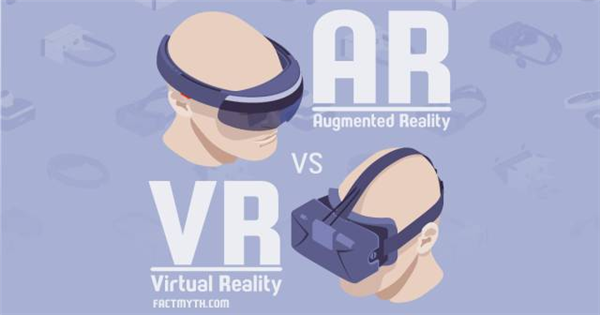
Virtual reality (VR) and augmented reality (AR) are described as the third wave of media media after web browsers and mobile phones. Some people call it the transition point of the information age and the deep experience era. .
No matter how it is defined, it is an emerging young space that has inspired many people to imagine the development and vision of the “Virtual Reality+†industry.
In the past few years, AR and VR have evolved from military and aerospace to more mainstream industries. Teachers, coaches and therapists claim that they have gained more benefits from the immersive experience.
Although VR applications in schools have not yet been counted, the steady growth of the market is reflected in the emergence of educational VR equipment companies, as well as the education courses and courseware content, teacher training and technical tools provided specifically for schools.
Numerous articles, research papers, and conferences have emphasized the impact of immersive experiences and VR technology on classrooms and laboratories. Most people believe that AR and VR will grow rapidly in the education industry.
Nowadays, the application process of VR technology in education has gradually entered a stage of “down-to-earthâ€. In Europe, many educational technology companies have also cut through VR and AR teaching tools to promote innovation in the education industry. Here are the top three European VR/AR education leaders:
Immerse Learning: A virtual training platform for businesses
Established: 2005
Location: London, UK
Official website: https://

Immerse is a 3D virtual platform for collective learning, training and knowledge sharing. It combines the advantages of face-to-face training, online learning and virtual reality, and 3D simulation on one platform to provide a “perfect place†for online training employees.
The company's 3D platform combines real-time voice technology, an online immersive environment and collaborative learning tools to enable companies and organizations to deliver large-scale, innovative, real-time training to employees in different locations.
Especially in the training of large-scale, high-risk projects, Immerse helps customers turn training into an attractive 3D or virtual reality experience by creating a scenario-based learning module that allows students to experiment, in a safe and controlled environment. Failed until it is mastered.
Whether the company wants employees to study together or learn alone, the platform can help companies enhance a variety of capabilities through a range of experiences. These trainings are supported by a central system that collects records and generates reports to ensure that the company's employees' capabilities continue to improve over the long term.
It is worth mentioning that this immersive platform requires only a computer, headphones and network to be accessed through a web browser. With its unique virtual training tools and content management system, Immerse can easily upload and share learning resources wherever the company's trainers and students are located.
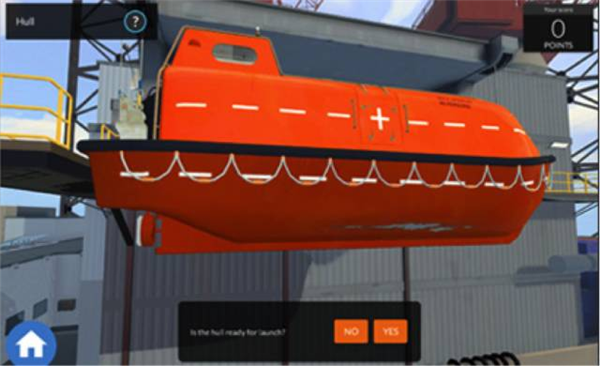
The picture shows ImmerseLearning helping Ensco carry out lifeboat training. Immerse Learning's standardized, repeatable, and traceable 3D virtual reality lifeboat training for oil rig staff allows staff to perform high-risk training in a controlled and safe environment and get their feedback from feedback and reporting tools On-site response, the data recorded by the control panel can analyze the quality of the training
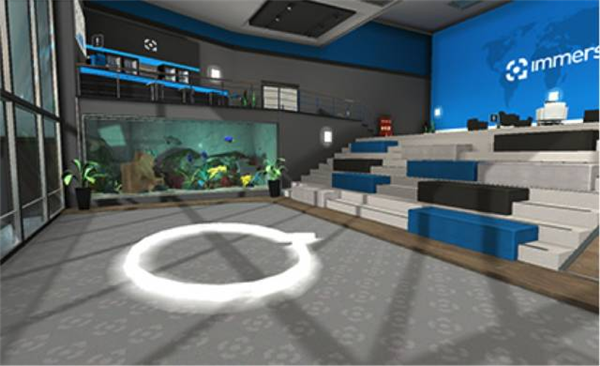
The picture shows the virtual meeting environment created by ImmerseLearning for the British Council.
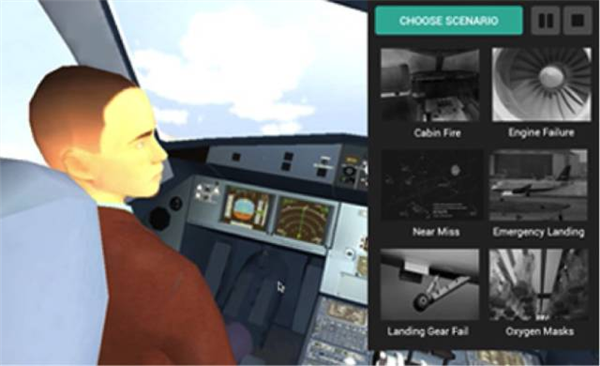
ImmerseLearning and Air France's English Language Training Program
Company Profile
ImmerseLearning, formerly known as Languagelab.com, was founded in London in 2005 and is the world's first English-language training school based on the online virtual world. The teachers and students use avatars, and the content of the teaching changes according to the context.
Co-founder David Kaskel is amazed at the fact that in large-scale multiplayer online role-playing games, players in different language countries learn and master each other's language phrases, so they begin to study the language-based learning process in video games. And eventually founded Languagelab.com.
In February 2014, with the application and development of virtual reality technology, Languagelab.com changed its name to Immerse Learning and transformed into a platform designed to design immersive learning courses for corporate and higher education projects. The company's business includes VR learning, English language training, LIVE 3D learning, general English, simulation, platform as a service (PaaS), online English language assessment, gamification and game-based learning modules.
Current Immerse Learning clients include Air France Air France, Ensco (Ensk International, the world's largest offshore oil and gas drilling company), and the British Council British Council.
The company had received two investments between 2011 and 2014, totaling approximately $2.04 million. The company also said to the British Education Weekly that it hopes to introduce Immerse Learning to China.
Labster: Convenient and secure virtual lab
Established: 2011
Location: Copenhagen, Denmark
Official website: https://
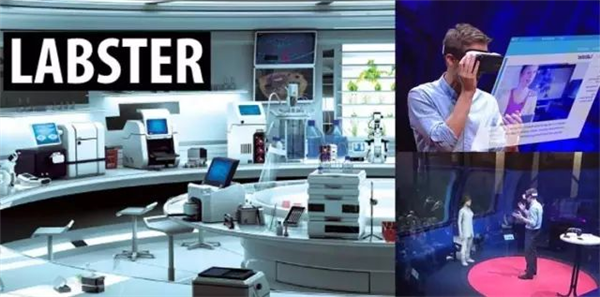
The feeling of studying science but not being able to complete experiments in a real lab is certainly not very good. However, building a safe lab is expensive and not affordable for every school or university.
So the Dutch-based startup Labster offers an alternative virtual lab that is simpler, cheaper and safer. Labster uses advanced technologies such as VR to enhance the level of experimental teaching. This global virtual laboratory platform edifies education through immersive 3D, allowing students to love science and help them improve their learning efficiency.
Labster presents a highly realistic simulation of the lab environment in the form of 3D animations, which helps students achieve the steps of each experiment and can perform experiments with high difficulty. Compared to traditional teaching, students who use Labster do not have to face a long paragraph of text and an inaccurate 2D picture. Instead, they can come out of the textbook and do it themselves.
More importantly, students are finally given the opportunity to experiment with experiments with high risk factors – often cut off during teaching. Even if a student accidentally made an earth-shattering thing in the experiment, the "explosion" is only this virtual laboratory, and the teacher does not have to worry about security.
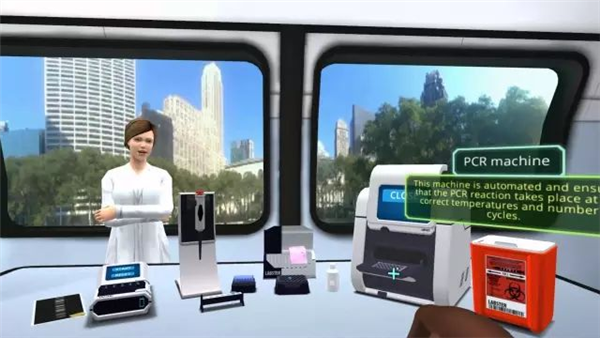
Labster relies on virtual guidance to issue every step of the instruction, as well as explaining some of the specifications in the lab to help students identify, recognize, and understand the various laboratory equipment and their uses.
Currently, Labster offers 27 different modules covering subjects including biochemistry, biotechnology, cell and molecular biology, ecology, evolution and life diversity, chemistry, genetics and microbiology, combined with gamification elements. Such as the immersive 3D universe, story and scoring system, to stimulate students' curiosity and highlight the connection between science and real problems.
In addition to being a teaching aid, Labster can also serve as a teacher's assessment tool. Teachers using Labster can also access student achievement records from the information center to help students identify problems and review them according to their own situation.
All Labster experiments are based on real-life case studies and equipment that match the core learning objectives of the university's science curriculum. The company is currently working with Samsung Gear VR and Oculus to develop a virtual reality crime scene survey (CSI) course package that provides students with a more realistic lab experience.

Virtual Crime Scene Investigation Course developed by Labster
Company Profile
Labster is a fast-growing, award-winning company. Founded in Denmark, the company is committed to transforming the teaching methods of science subjects and bringing them to students around the world.
Its founder, Mads Bonde, hopes to change the deadly atmosphere of college classrooms and experimental operations. Studies have shown that most college students currently believe that science is "boring", and the main reason is the teaching method, especially the principle that needs to be memorized. In the absence of experimentation, students can't grasp it solidly.
After learning about these situations, Bond is determined to use VR technology to create a virtual laboratory to solve the problems of current university education, and to help those universities with low budgets to "equip" an experimental site with expensive equipment.
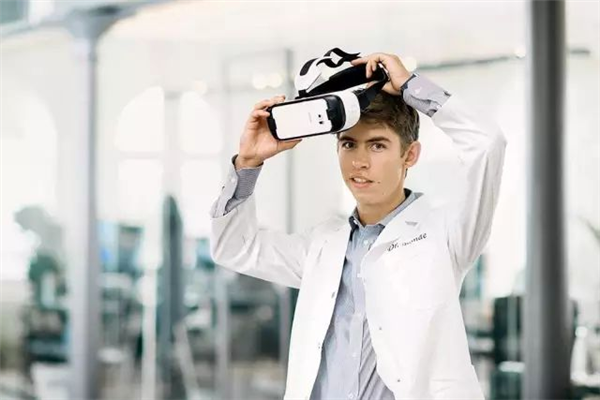
The picture shows the founder of Labster Bond.
Labster effectiveness is now widely recognized by academics and even decision makers. The lab is now available to the University of California, Harvard University, Gwinnett Technical College, Massachusetts Institute of Technology, Exeter University, New Haven, Stanford University, New England University, Trinity College, and the University of Hong Kong. use.
The data shows that the company had a round of financing in April 2016, a total of 3.67 million US dollars, the leading investment company is Innovation Fund Denmark.
Curiscope: Changing the smart shirt in the biology class
Established: 2015
Location: Brighton, UK
Official website: https://

The company was founded in the UK in 2015 and has only released two products. One of the most well-known products is the smart T-shirt Virtuali-Tee, a shirt that helps dissect teaching through a mobile app.
In 2016, the company raised nearly $110,000 on Kickstarter for the production of Virtuali-Tee. After crowdfunding, Curiscope officially released an enhanced version of Virtuali-Tee, which is one of the most popular VR experiences to date and has become a partner of Google Daydream.
Users can use the mobile phone or tablet to observe the 3D animation of the "stereo" work on the Virtuali-Tee. For example, with the VR hood such as Google Cardboard, the user also performs a virtual tour of the human body within 360 degrees without a dead angle, such as a 360-degree CG animation about blood flow, accompanied by relevant physiological knowledge.
The development team believes that this has profound implications for intuitively understanding the working patterns of the human body, attracting children's attention, providing contextual learning scenarios, and ultimately changing the teaching model of the biology classroom.
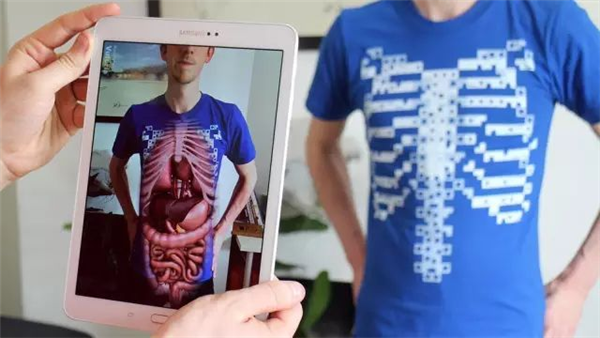
Founder Ed Barton said, “In the teaching process, we often feel that we are out of the way. For example, when learning anatomy, we usually only see its model in textbooks and slides.†So the team hopes to develop a A teaching experience that allows users to have a personal experience and interact with this anatomical model.
The team's "Great White Shark" is also one of the most viewed VR videos on YouTube, with more than 12 million hits. In this 90-second CG animation, the user can also watch the movement of the great white shark in a 360-degree angle, while viewing the side profile of the great white shark and observing the changes in the body structure of the shark while swimming.
Barton said that the development of this video took about three months, and the team subsequently won the annual award from PETA.
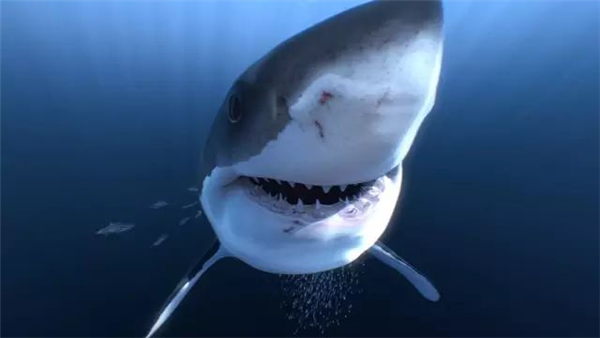
Company Profile
Curiscope's founders, Ed Barton and Ben Kidd, began exploring the world of AR and VR in 2015, exploring how to use these new technologies to enhance people's sense of participation and create a real-world experience.
Founder Ed Barton used to be a filmmaker, but the vision of virtual and augmented reality inspired him to create Curiscope to design VR and AR experiences for kids. Barton has been shortlisted for the Forbes European version of the 30 under 30 technology list.
The company's goal is to revolutionize the way humans learn, by using virtual reality technology to build deep connections with human history, the environment and the future. After completing crowdfunding last year, Curiscope said it will further develop teaching products or content that combines VR and AR technologies.
Linux Face Recognition features
1. The Linux face identification device status can be set through the TCP/IP network, as well as upload and download information; network communication data encryption.
2. Naturalness, the method of Linux access face recognition is the same as the biological characteristics used by humans for individual recognition.3. Temperature Linux face recognition completely non-contact, can avoid bacterial infection, more health and sanitation and temperature measurement.
4. 8 inch Linux face recognition has voice prompt, real human voice prompts whether the face image is verified successfully.
Linux Face Identification Device,8 Inch Linux Face Recognition,Temperature Linux Face Recognition,Linux Access Face Recognition
Guangdong Zecheng Intelligent Technology Co., Ltd , https://www.szzcsecurity.com